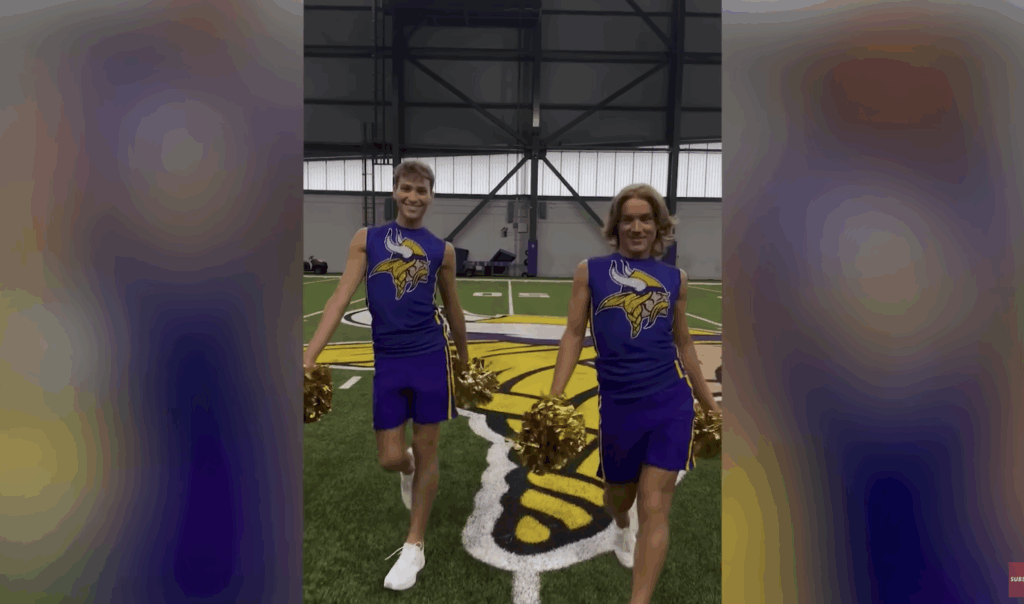A recent performance by a male cheerleader with the Minnesota Vikings has sparked significant debate on social media, reflecting broader discussions about gender roles and sexuality in sports. The cheerleader’s flamboyant dancing alongside female members of the cheer squad drew criticism from some fans, who expressed discomfort with what they perceive as the NFL’s promotion of a pro-LGBT agenda.
The video, which gained traction online, prompted a wave of reactions. Critics labeled the cheerleader’s performance as an inappropriate display, suggesting it detracted from the traditional atmosphere of NFL games. Emily Leibert, a writer for The Cut, characterized the critics as “the most fragile members of the NFL’s fanbase,” while Joe Nelson of Sports Illustrated expressed concern over the “hate and disrespect” directed at the cheerleader and his fellow performers.
Supporters of the cheerleader argue that the backlash stems from a misunderstanding of gender expression and sexuality. Many women, in particular, have voiced confusion over why some men react negatively to flamboyant displays of homosexuality. They question why a gay man’s performance is met with disdain, while a woman engaging in traditionally masculine activities often receives acceptance.
The debate touches on deeper societal norms regarding masculinity and femininity. Some commentators suggest that the discomfort arises from a perceived inversion of traditional gender roles. They argue that when a gay man adopts behaviors associated with femininity, it challenges conventional expectations of male sexuality.
Critics of the backlash assert that the reaction is rooted in outdated views of masculinity. They argue that the performance should be embraced as an expression of diversity within the NFL. However, others contend that the cheerleader’s portrayal aligns with a sexualized image that many fans did not anticipate or desire at a sporting event.
“When a man performs as though he were a female cheerleader, it can feel like an intrusion into a space that is traditionally male-oriented,” said one commentator who preferred to remain anonymous. “It’s not about the cheerleading itself, but the way it is performed that raises concerns.”
The conversation also highlights the complexities of how different demographics perceive sexuality. Some men reportedly find displays of homosexuality uncomfortable due to a natural response to behaviors they view as contrary to traditional gender norms. This perspective suggests that the male cheerleader’s performance may be interpreted as a challenge to established notions of masculinity.
In contrast, many women argue that such performances should not provoke negative reactions. They emphasize the importance of inclusivity and acceptance within all spheres, including sports. The ongoing dialogue reflects a broader cultural shift towards understanding and embracing diverse expressions of identity.
As the NFL continues to navigate these discussions, the incident serves as a reminder of the evolving landscape of gender and sexuality in sports. The reactions to the male cheerleader’s performance illustrate the tension between tradition and modernity, as well as the ongoing struggle for acceptance and understanding across different communities.
READ ICE Arrests Convicted Criminals in Nationwide Operation



